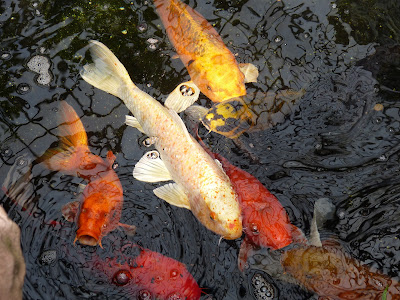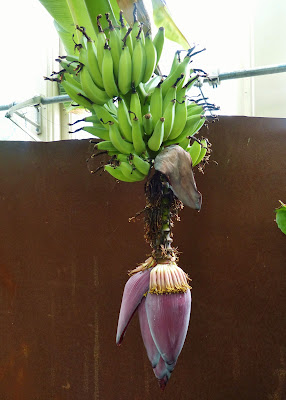A Chicago Experience in Photographs
As the saying goes, a picture is worth a thousand words. I recently came home from a conference trip to Chicago with many long-winded stories, as well as over 1,000 photographs to supplement them. Aside from the occasionally blurry oversight, most were taken to help share information from my experience--a new idea from another museum, facts that I didn't want to forget, or images of Chicago's striking, urban landscape. Rather than write out another long-winded account of my recent excursion, I hope to share some images of the experience.
The first day at the conference for the Society for the Preservation of Natural History Collections, I promptly left Chicago and headed back north for a tour of the Milwaukee Public Museum. There, a group of about twenty meandered through the exhibit halls, live insects collection, and basement storage filled with unique taxidermy mounts.
 |
| Carl Akeley's original muskrat diorama. |
 |
| Bees! Pollinators have been at the forefront of my mind since helping to create the Museum's native bee exhibit last year. |
 |
| I was more than willing to hold a grasshopper that's native to the southern part of the States. |
 |
| The Butterfly Vivarium allows visitors to enter a garden with free-flying butterflies year-round. |
 |
| The extinct Passenger Pigeon species, once thought to number 3-5 billion individuals, is now represented by at least 980 museum specimens worldwide (including our own). |
 |
| Another butterfly viviarium! |
 |
| Chrysalides are shipped from places around the world to the Museum, where adult butterflies emerge and are released for public viewing. |
 |
| The Museum has an open lab where visitors can learn first-hand about specimen preparation. |
In between talks, posters, and social occasions with other conference folks throughout the week, I found some time to sneak away and visit local attractions. My favorite solo trip was to the Garfield Park Conservatory.
 |
| The conservatory cares for a number of tropical and non-native plant and animal life, ranging from bananas to koi fish. |
 |
| I encountered more familiar life in the outdoor space, and naturally paid special attention to examples of pollination in action. |
 |
| I also indulged in some bird watching as I observed above and below-- even discovering four killdeer chicks which bounced around like cute, camouflaged cotton balls. |
Everyone ended their conference experience with a "Friday at the Field" event. As host of the 34th annual conference, the Field Museum gave free admission to all attendees and provided us with one last collections tour of the week.
 |
| Science on view--visitors have the opportunity to watch staff work with collections and find inspiration in the process. |
 |
| As with most museums, the Field appreciates donations from the public which help them to operate. |
It was a week to remember, but I'm glad to have photographic mementos, too.









